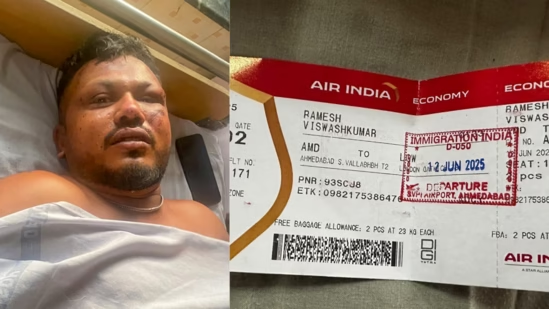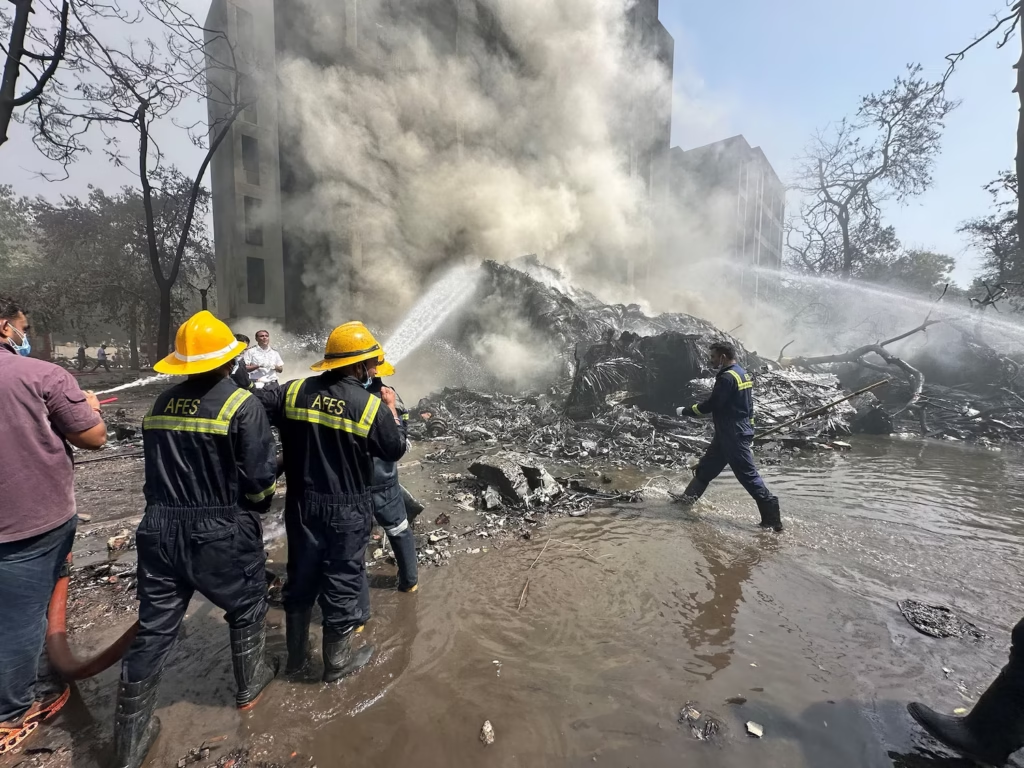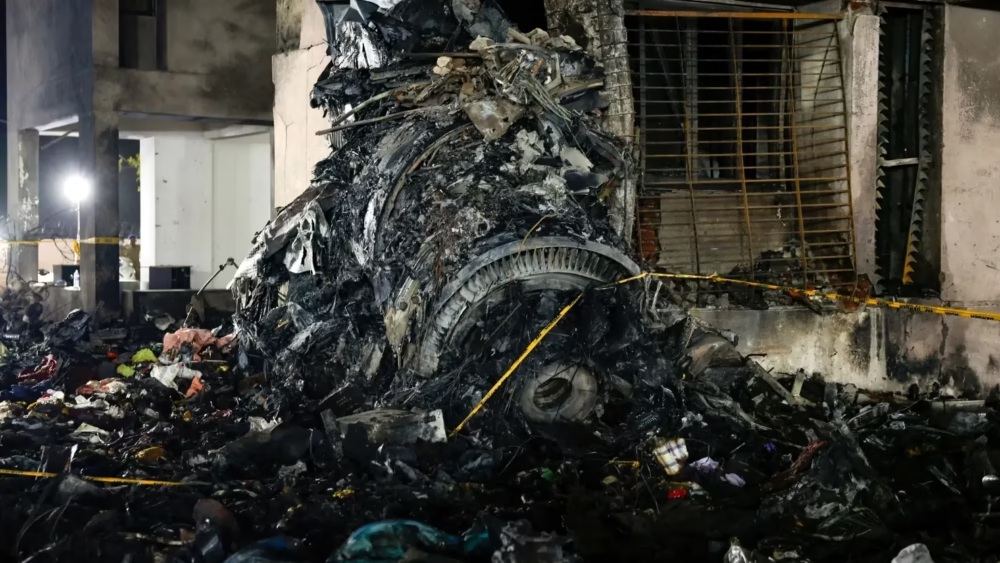Shattered Ascent: How Air India’s Tragedy Could Redefine the Tata Group’s Sky-High Ambitions
The Takeoff That Ended in Tragedy
Ahmedabad, June 12, 2025—What began as a routine international flight turned into one of the darkest days in Indian aviation history. At exactly 1:39 PM IST, Air India Flight AI171, a Boeing 787-8 Dreamliner, departed from Runway 23 at Sardar Vallabhbhai Patel International Airport, destined for London Heathrow. Within mere seconds, however, tragedy struck.
- Shattered Ascent: How Air India’s Tragedy Could Redefine the Tata Group’s Sky-High Ambitions
- The Takeoff That Ended in Tragedy
- Seasoned Pilots, Unanswered Mayday
- What Could Have Gone So Horribly Wrong?
- 1. Catastrophic Dual Engine Failure
- 2. High-Risk Bird Strike Zone
- 3. Improper Flap Configuration
- 4. Overweight and Heat Stress
- Tata Group’s Bold Aviation Vision Now Under Pressure
- A Moment of Reckoning for Indian Aviation
- Trust Must Now Take Flight Before Planes Do

The aircraft managed to climb to just 625 feet before it suddenly plummeted, crashing into a densely populated residential neighborhood barely 1.5 kilometers from the airport. The horrifying incident resulted in 241 lives lost onboard, including passengers and crew, along with 28 fatalities on the ground. One lone survivor, 28-year-old Vishwash Kumar Ramesh, emerged from the wreckage with minor injuries, offering the only eyewitness account from within the doomed aircraft.
This catastrophic crash now stands as the deadliest Indian aviation disaster in more than a decade.
Seasoned Pilots, Unanswered Mayday
The aircraft was under the command of Captain Sumeet Sabharwal and First Officer Clive Kundar, both highly experienced pilots with over 9,000 hours of combined flight time. Despite their expertise, they had little time to act. A mayday call was issued seconds after takeoff, but tragically, it was the last transmission received from the cockpit.
According to Vishwash Kumar Ramesh, a loud bang was heard moments after takeoff, followed by an abnormal flight path that seemed to struggle for altitude.
What Could Have Gone So Horribly Wrong?
Though the final investigation report is months away, aviation experts and safety analysts have already begun exploring several likely causes:
1. Catastrophic Dual Engine Failure
While exceedingly rare, some analysts are exploring the possibility of both engines failing simultaneously. This might result from fuel contamination, a blockage in the fuel metering valves, or an electronic malfunction. GE Aerospace, which manufactures the 787’s engines, has dispatched a team to work with Indian investigators.
2. High-Risk Bird Strike Zone
Ahmedabad airport lies in a known bird activity corridor. Gujarat alone has recorded 462 bird strikes in the last five years, with several reported near this specific airport. A bird strike disabling both engines could mirror scenarios like the famous 2009 Hudson River landing, albeit without a nearby water body to facilitate an emergency ditching.
3. Improper Flap Configuration
Failure to set the correct flap angle during takeoff is another theory. Given the scorching 40°C temperature on the day of the crash, the aircraft needed maximum lift capability. The Boeing 787 has built-in configuration warning systems that alert the cockpit crew if flaps aren’t properly extended. But if this alert was missed—or the system failed—it could point to either human error or a critical malfunction.
4. Overweight and Heat Stress
Flight AI171 was scheduled for a long-haul international route, likely carrying around 100 tonnes of fuel. This heavy load, coupled with extreme heat, may have significantly affected thrust-to-weight ratio and climb performance. Combined with any minor lapse in aircraft configuration, these conditions could become a perfect storm.

Tata Group’s Bold Aviation Vision Now Under Pressure
This tragedy isn’t just about a failed flight. It sends shockwaves across the entire Tata Group and its ambitious plans for Air India. After acquiring the airline back from government control in 2022, Tata Sons has been investing heavily in rebranding Air India as a premium international carrier, rejuvenating its aging fleet, revamping customer experience, and hiring globally renowned leadership.
But the crash now raises critical questions:
- Has Air India’s transformation outpaced its operational maturity?
- Are safety checks, crew training, and fleet integration robust enough to support rapid expansion?
- Is the DGCA (Directorate General of Civil Aviation) adequately resourced to regulate such fast-paced aviation developments?
A Moment of Reckoning for Indian Aviation
Air India’s rebirth under Tata was seen as a new era for Indian aviation—one that promised prestige, safety, and service excellence. However, the events of June 12 have put that entire narrative into question.
For Chairman N. Chandrasekaran and CEO Campbell Wilson, the road ahead is no longer just about brand elevation or global market share—it’s about restoring public trust.
The entire industry now awaits the findings from Flight Data Recorder (black box) analysis and cockpit voice recordings. These answers may hold the key to understanding not just what failed, but why.
Trust Must Now Take Flight Before Planes Do
This crash has etched a deep scar not only in India’s aviation record but in its national psyche. More than a corporate setback, it’s a collective call for greater transparency, accountability, and rigor in air safety protocols.
The Tata Group must now prove that its ambitions are not just sky-high—but firmly grounded in responsibility and resilience. For passengers, for regulators, and for a country that’s looking up with hope, it’s not just about flying again—it’s about feeling safe in the sky.









